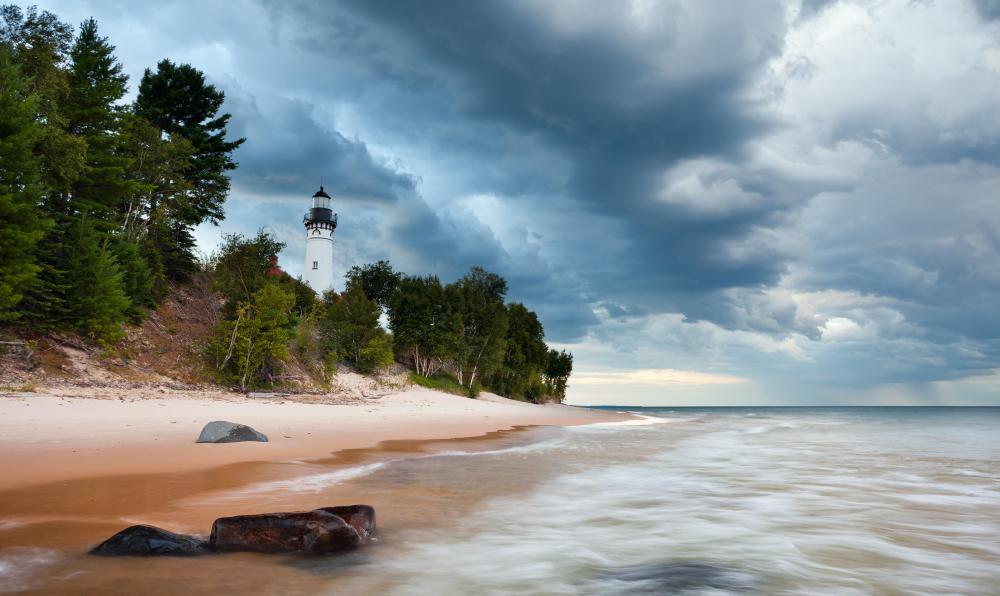At AllThingsNature, we're committed to delivering accurate, trustworthy information. Our expert-authored content is rigorously fact-checked and sourced from credible authorities. Discover how we uphold the highest standards in providing you with reliable knowledge.
What is a Lake Trout?
Lake trout are a species of fish native to North America. They are a solitary freshwater fish commonly found in the lakes and rivers of Canada and the northern United States. Lake trout have risen in popularity and are highly sought after for sport and consumption.
The name trout is used to describe several types of fish in the family Salmonidae. Lake trout are a type of char, often spelled charr, a subgrouping of trout. They are sometimes referred to as mackinaw, the salmon trout, gray trout, and lake char. Their forked tail and the absence of pink spots differentiate them from other char species.

This freshwater fish is the largest of the char subgroup and the largest trout species in North America. An average adult lake trout is 20 to 30 inches (45-70 cm) long and weighs anywhere between 9 to 15 lbs (4-7 kg). Lake trout have reached sizes considerably larger than this, up to 65 pounds (30 kg).
The diet of the lake trout varies with geography and the available food supply. The diet of an adult can consist of smaller fish, crustaceans, and insects. If sculpins, grayling, or whitefish are available it will also feed on them. The young largely feed on insects and plankton.

Lake trout species grow slowly and can live up to 25 years, with maturation likewise occurring at a slow rate. Lake trout that consume a diet mostly of other fish generally mature to a larger size than lake trout that feed on plankton. At seven years old the lake trout becomes sexually active. The males clear a spawning area of debris, and the females lay their eggs on the rocky lake bottom. The eggs are laid in the summer to early winter when the lake trout leaves the deeper waters for the shallows. They hatch when spring has begun.

The lake trout's range extends from the Great Lakes and a few other freshwater lakes in the northern United States through most of Canada and into southern Alaska. It prefers lakes that are large, deep, and oxygen rich. It only leaves the deeper water in the summer when it lays its eggs.
As a result of its popularity, the lake trout has been exported from North America to other continents. They have been successfully introduced into Europe, South America, and parts of Asia. Fishing methods include the standard pole and reel and fly fishing, the latter being more successful.
Frequently Asked Questions
What exactly is a lake trout?
Lake trout, scientifically known as Salvelinus namaycush, is a freshwater char living mainly in lakes in northern North America. They are a cold-water species, preferring temperatures of 40-55°F (4-13°C), and can grow quite large, with some individuals reaching over 100 pounds, though the average is much smaller.
Where can you find lake trout?
Lake trout are found in the cold, deep, oxygen-rich waters of Canada, Alaska, the Great Lakes, New England, and parts of the Northwestern United States. They thrive in large, deep lakes and are less common in shallow waters, as they require specific conditions to prosper.
What do lake trout eat?
Lake trout are apex predators in their habitats, primarily feeding on other fish. Their diet includes smaller fish like ciscoes, whitefish, and sculpins. Larger lake trout have been known to consume fish nearly as large as themselves. They also eat crustaceans, insects, and plankton when available.
How long do lake trout live?
Lake trout have a relatively long lifespan compared to other freshwater fish. They can live up to 25 years or more, with their longevity contributing to their potential for significant size. This extended lifespan allows them to reach maturity at around 6 to 8 years of age.
Are lake trout good to eat?
Lake trout are considered a delicacy by many, known for their firm, flavorful flesh that is high in Omega-3 fatty acids. They can be prepared in various ways, including smoking, grilling, and baking. However, consumption should be moderated due to potential mercury accumulation in larger, older fish.
What is the conservation status of lake trout?
Lake trout populations have faced challenges due to overfishing, habitat loss, and the introduction of invasive species. Conservation efforts, such as stocking and habitat restoration, have been implemented to help stabilize and increase their numbers. In some areas, they are considered a species of special concern, but they are not currently listed as endangered.
AS FEATURED ON:
AS FEATURED ON:













Discuss this Article
Post your comments